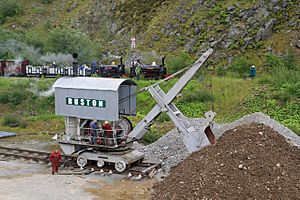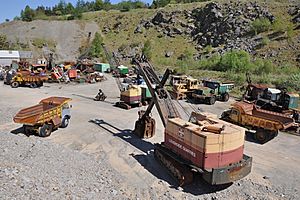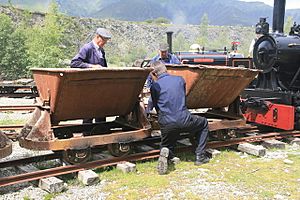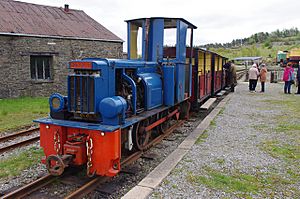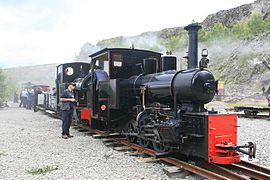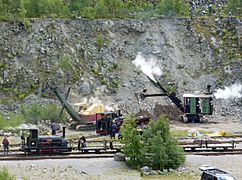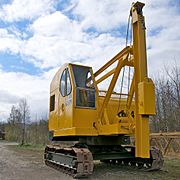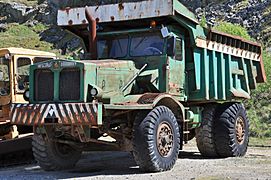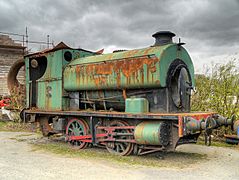Threlkeld Quarry and Mining Museum facts for kids
The Threlkeld Quarry and Mining Museum is a super interesting museum located in Threlkeld, a village about 3 miles (5 km) east of Keswick. It's found in the beautiful Lake District area of Cumbria, England. This museum lets you explore an old quarry filled with amazing antique machines like trains and cranes. You can even go on an underground tour that feels like a real mine! There's also a museum about rocks and mining, plus a fun activity where you can try mineral panning.
Exploring the Quarry
The Threlkeld Quarry first opened way back in 1870. Its main job was to provide special stones called railway ballast for the Penrith-Keswick railway line. Later, the stones from this quarry were used for big projects. For example, the Manchester Corporation Water Works used them for their Thirlmere water scheme. The stones also helped build the Crewe-Carlisle railway line and were used for roads and building fronts. The granite quarry finally closed in 1982. Today, it's home to the Threlkeld Quarry & Mining Museum, run by dedicated staff and volunteers.
The Museum's Railway
The museum has its own railway with special trains! These trains are a big part of the museum's charm.
Sir Tom the Steam Train
One of the museum's stars is a steam locomotive named 'Sir Tom'. It was built in 1926 by a company called W.G. Bagnall in Stafford. The train got its name from Sir Tom Callender, who worked for a company called British Insulated Callender's Cables (BICC). This small steam train worked at BICC in Kent until 1968. After resting for 33 years, 'Sir Tom' arrived at Threlkeld in 2001. It was carefully repaired and rebuilt. Since 2010, 'Sir Tom' has been busy pulling passenger trains. It takes visitors on rides from the middle part of the quarry into the inner quarry.
Outdoor Machine Display


